


10.18639/RABM.2019.871388
Original Research Article
Jun 25, 2019
India is the epicenter of tropical fever diseases. Large numbers of cases are diagnosed with scrub typhus, leptospirosis, malaria, dengue, chikungunya, and enteric fever. Coinfections as an etiology of acute undifferentiated fever (AUF) have been recently recognized. The objective of this study was to assess the prevalence of coinfections in patients admitted with AUF in a tertiary-care hospital in the rural setting of Himachal Pradesh, India. Patients with coinfections as an etiology of AUF were the subjects of the study. The clinical records of patients diagnosed with confections between July 2018 and October 2018 were analyzed retrospectively in this hospital-based cross-sectional study. Standard protocol and guidelines were followed for the case definitions. Among total patients of 1005 with AUF, 14 (1.39%) patients were found to have coinfections. The most common coinfection was scrub typhus with leptospirosis and was diagnosed in seven (50%) patients. Other coinfections were scrub typhus with dengue in four (29%) and one patient each with scrub typhus and tubercular meningitis, scrub and influenza A (H1N1/2009) infection, and scrub and malaria (P. falciparum). Scrub typhus was the most common etiological diagnosis for the AUF and was observed in 159 (15.8%) patients. All the patients with coinfections had scrub typhus as the common infection. The prevalence of coinfections among scrub typhus patients constituted 8%. In tropical regions, coinfections are not very rare. High clinical suspicion for coinfections is required. Syndromic approach in the management is justified.

10.18639/RABM.2019.869429
Tuberculosis
Jun 23, 2019
Tuberculosis (TB) is a well-known disease state caused by the bacteria Mycobacterium tuberculosis. The disease accounts for about 1.5 million deaths worldwide and is transmitted from person to person by the inhalation of respiratory droplets. The progression of tuberculosis from the latent phase to its active form has been reported to be associated with reduced immunity and occurs in about 10% of tuberculosis-infected population. Trace elements play a vital role in the maintenance of the immune system in humans, and therefore their concentration in the serum is important in the management of TB patients. The primary objective of this study was therefore to assess the serum concentrations of zinc (Zn), copper (Cu), and manganese (Mn) in tuberculosis patients and compare the results obtained against apparently healthy subjects as well as to compare the concentrations of trace element levels in TB patients already on antituberculosis drugs against those not yet exposed to antituberculosis drugs. A total of 62 TB patients were selected, and their blood samples were collected while controls were taken from 20 apparently healthy individuals. The results obtained showed that the serum concentration of the trace elements Zn and Cu was significantly lower and higher for Mn (1.58±1.09 mg/l, 1.17±0.16 mg/l and 0.78±0.11 mg/l, respectively) in the control than in tuberculosis patients (2.59±1.79 mg/l, 1.64±0.47 mg/l, and 0.25±0.35 mg/l). However, those on drugs had higher Zn and Cu levels than those not on drugs. It was therefore concluded and recommended that further studies should be carried out to ascertain the mechanism of action of antituberculosis drugs and their specific effects on serum trace elements of immunological significance, to improve the care for tuberculosis patients.

10.18639/RABM.2019.874345
Microbiology and Immunology
Jun 20, 2019
Overuse and misuse of different antibiotics are considered as one of the main causes of antibiotics accumulation in the environment, most commonly used antibiotics are semimetabolized and excreted by humans to the environment. Studies reported that antibiotic usage exceeds 100,000 tons per year, and this amount may be shocking. However, in fact, the persistence of antibiotic compounds may be more dangerous than the used amount, so it is necessary to develop new methods for elimination of these new pollutants from the environment, especially from water. In this paper, we highlight new and more efficient methods used for removing antibiotic residues (AR) and antibiotic resistance genes (ARGs). The new techniques are Fe3O4/red mud nanoparticles, 3D hierarchical porous-structured biochar aerogels, calcined layered double hydroxides, co-doped UiO-66 nanoparticles, Cu@TiO2 hybrids, bioelectrochemical systems, and aerobic granulation process. Most of these methods showed good performance in removing AR and ARGs that ranged from 85% to 95%. These percentages are consider very efficient compared with traditional wastewater treatment methods.

10.18639/RABM.2019.869903
Original Research Article
Jun 05, 2019
A fast and specific reversed-phase high-performance liquid chromatography (HPLC) method was used for the immediate identification of flavonoids (gallic acid, rutin, quercetin, ascorbic acid, and kaempferol) in the leaves extract of Mangrove (Rhizophora apiculata). The R. apiculata has lots of valuable medicinal properties including antiallergic, anti-inflammatory, antimicrobial, antiviral, antioxidant, vascular antitumor activity, and enzyme inhibition; however, the activity of antioxidant is perhaps the greatest studied property attributed to flavonoids. Magnetic stirrer was used for the pretreatment process of sample with methanol by using a temperature of 50°C for 40 min, followed by separation on column size 250 mm 4.6 mm (5 μm) Hypersil Gold C18 (Thermo Electron Corporation) with water–methanol–acetonitrile (45:40:15 v/v/v) containing acetic acid 1.0% as a mobile phase. Moreover, 254-nm wavelength was used to detect the extract. The standard retention times (Rt) of gallic acid, rutin, ascorbic acid, quercetin, and kaempferol were found to be 2.610, 2.875, 3.150, 5.789, and 8.983, respectively. The existence of gallic acid, rutin, ascorbic acid, kaempferol, and quercetin in Mangrove leaves extract was found matching according to the standard retention time. In Mangrove leaves, gallic acid was found to have the retention time at 2.538, rutin at 2.873, quercetin at 5.796, and kaempferol at 8.976. However, the ascorbic acid was not identified. The amount of rutin, gallic acid, quercetin, and kaempferol was calculated by using the assay formula. In Mangrove leaves, the amount of gallic acid, rutin, quercetin, and kaempferol is 3.024, 5.485, 5.144, and 8.361%, respectively.

10.18639/RABM.2019.869984
Agriculture and Allied Sciences
May 23, 2019
The contamination of soil by anthropogenic activities is of great concern in recent times. There is an urgent demand of reliable and eco-friendly approaches for remediation of this concern. The current techniques for heavy metal remediation from contaminated soil are costly, time consuming, and harmful for the environment. Toxicity of heavy metals can reduce plant growth, and a high level of presence of these heavy metals is a risk factor to human and plant health. Heavy metals neither biodegradable materials nor are created. They occur naturally in the earth crust, and they reach the environment by human activities. Organic compounds can be degraded, but metals cannot degrade, and therefore effective cleanup requires its immobilization to reduce or remove toxicity. Recently, research focuses on cost-effective technologies to clean polluted areas. Vermiremediation and phytoremediation are two such useful techniques. In these eco-friendly techniques of remediation, the target plants accumulate, volatilize the contaminants, or convert them into some nontoxic forms, thus remediating the soil.

10.18639/RABM.2019.858317
Original Research Article
Apr 03, 2019
The use of air conditioners (ACs) in homes has become a necessity in urban cities such as Lagos State. The rapid growth in the use of AC has been attributed majorly to protection from high thermal exposures. However, there have been controversies regarding physiological discomforts attributed to AC use. This study therefore seeks to elucidate the associations between AC use and some selected physical ailments using random samples from Lagos State. A structured questionnaire was administered to 200 randomly selected participants. The responses were scored, and the data were analyzed accordingly. The study showed that AC devices were mostly used in sitting room bedroom offices vehicles. The frequency of cold, fever, headache, and chest pain significantly (p 0.01) associate with the use of AC in both sitting room and bedroom. The prevalence of the associated ailments increased with increase in the AC contact duration (6 h) among AC users evaluated in the study. Most of the participants (70%) agreed that AC use brings thermal comfort and therefore is good to health. However, prolonged exposure in indoor AC environments increased the risk of physiological discomfort for the AC users in this study. The authors therefore suggest health workers to create awareness to educate AC users of the likely dangers with prolonged exposure.
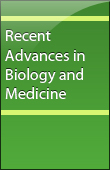
10.18639/RABM.2019.770620
Original Research Article
Feb 20, 2019
Long-term/chronic insomnia occurs in patients for over one month; it can affect the functions of the immune system and responses, which may involve cytokines. The aim was to determine alterations of Tumor necrosis factor alpha (TNF-alpha) and IL-10 cytokines in long-term insomnia. Thirty-three long-term/chronic insomnia patients (male, 22; female, 11) aged 47-61 years were initially recruited. Seven of them who were infected with microbial agents were excluded from the study. Of the 26 free of infectious agents only 21 (female, 5; male, 16) were successfully monitored. Age-matched apparently healthy non-insomnia subjects (male, 25; female, 25) free of the infectious agents were recruited as control. Plasma TNF-alpha, IL-10, HBsAg, anti-HCV, and HIVp24 antigen were assayed by ELISA method while determination of Mycobacterium tuberculosis was by Ziehl–Neelsen staining of sputum and Plasmodium spp. by thick blood Giemsa staining. Of the 33 insomnia patients initially recruited, 21.2% (7) were infected with microbial agents (Plasmodium spp., 6.1% (2); HCV, 3.0% (1); HBV, 6.1% (2); Mycobacterium tuberculosis, 3.0% (1); Plasmodium spp. + HBV, 3.0% (1); and HIVp24, 0). Twenty-one chronic insomnia patients were finally investigated on cytokines. There were significantly higher mean plasma values of TNF-alpha and IL-10 cytokines in chronic insomnia patients before treatment than the values obtained in the control subjects (p 0.05). The results also showed a significantly lower mean plasma value of TNF-alpha cytokine in chronic insomnia patients after treatment than the values obtained in the patients before treatment. There were no significant differences in the mean plasma values of IL-10 cytokines in chronic insomnia patients before and after treatment (p 0.05). There was a significant increase in plasma TNF-alpha and IL-10 cytokines in long-term insomnia patients before treatment while plasma TNF-alpha significantly decreased after treatment, and no significant difference was obtained in the plasma IL-10 before and after treatment. TNF-alpha could be a good investigative index of insomnia.
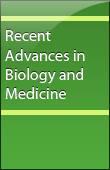
10.18639/RABM.2019.743583
Microbiology and Immunology
Feb 19, 2019
Diabetes Mellitus.
Diabetes mellitus can induce release of free radicals and oxidative stress, which can trigger production of cytokines. Vernonia amygdalina has antidiabetic activity due to its phytochemical constituents. This work was designed to determine possible immunological alterations in the plasma levels of TNF-α and Interleukin-10 (IL-10) in the traditional application of V. amygdalina (Ewuro) leaves in the treatment of diabetes mellitus. The study populations include all 33 diabetes mellitus patients (51-67 years; male, 21; female, 12) who had not commenced any form of medication or treatment and received herbal treatment in 10 herbal homes of Saki West, a local government area in Nigeria. Twenty-seven agematched volunteers who were treated on insulin medication in the hospital almost within the same period were also investigated. Patients who were positive to acid-fast bacilli sputum test, Plasmodium spp., identification, HBsAg, anti-HCV, and HIV-1 p24 assays were not included. Plasma TNF-α, IL-10, HBsAg, anti-HCV, and HIV-1 p24 were determined in the patients by ELISA while identification of acid-fast bacilli and Plasmodium spp. were carried out by Ziehl-Neelsen and Giemsa thick blood-film staining, respectively. There was a significant decrease in the plasma levels of TNF-α, IL-10, and glucose in diabetes mellitus patients after the administration of raw liquid extract of V. amygdalina and insulin compared to their basal samples before the commencement of the treatment (p 0.05). The work revealed a significant increase in plasma TNF-α, IL-10, and glucose in diabetes patients, which returned to normal plasma values after treatment using raw liquid extract of V. amygdalina leaves and insulin.
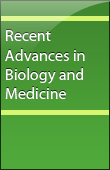
10.18639/RABM.2019.739740
Review Article
Feb 17, 2019
Hypopituitarism.
Traumatic brain injury often causes disability and death among adults and children. The injury may have a significant long-lasting effect to the neuroendocrine system. One of the most common effects is hypopituitarism. It can affect the quality of life and increase healthcare burden. This review is made to understand the hypopituitarism post-traumatic brain injury. The review was done by searching journal literature published in the last 10 years. Hypopituitarism can be found in the acute or chronic phase. Sometimes patients come with specific symptoms such as amenorrhea, infertility, precocious puberty, or even diabetes insipidus. A severe case of Addisonian crisis patient may end in an intensive care unit. Hypopituitarism post-traumatic brain injury will impair rehabilitation. Therefore, traumatic brain injury patient should be assessed for pituitary function examination in 6-12 months post injury to prevent further deterioration and improve the quality of life.
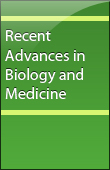
10.18639/RABM.2019.739577
Review Article
Jan 26, 2019
Autism Spectrum Disorder.
Autism spectrum disorder (ASD) is a single spectrum disorder. It is characterized by marked social deficit, stereotype behavior, flexibility, sensory sensitivity, and language impairment. However, ASD can also be accompanied by neuropathology and neuroendocrine dysfunction. Higher testosterone level intrauterine is assumed to increase ASD risk in early childhood. There is limited research about the correlation between ASD and neuroendocrine dysfunction.
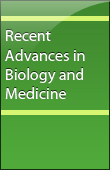
10.18639/RABM.2018.04.735155
Original Research Article
Nov 30, 2018
Histopathological studies of the effects of chloroform and methanolic leaf extracts of Ilex kudingcha in Trypanosoma brucei infected albino wistar rats were investigated. The toxicity and phytochemical study were also carried out using standard protocol. T. brucei infected animals were administered orally with 200 and 400 mg/kg b.w. of the extracts and 3.5 mg/kg b.w. of the standard drug (diminazene aceturate). Results on acute toxicity studies (LD50) revealed no sign of lethality up to the dose of 5,000 mg/kg body weight but the liver and kidney histology of infected animals treated with 5,000 mg/kg b.w. of I. kudingcha extracts were observed to be hepatotoxic and nephrotoxic. The methanol extracts showed appreciably high in vivo anti-trypanosomal activities compared to the reference drug. Histological examination of the organs revealed serious pathological lesions in the liver of the infected animals without treatment (negative control). In the positive control animals (infected animals administered standard drug), mild multifocal aggregate of inflammatory leucocytes was observed. In the other experimental animals, no pathological lesion was observed in the liver, kidney, brain, and heart of infected animals treated with the methanolic extract and combined methanol and chloroform extracts. The effectiveness of the methanolic extract at reducing the lesions caused by the parasite is the same compared with the standard drug. Phytochemical analysis of the plant extracts showed that methanol extract contained appreciable high levels of alkaloids, saponin, tannins, phenol, and glycoside while flavonoid was not detected. Hence, the curative properties of methanolic extract of I. kudingcha as observed in the organs indicate its anti-trypanosomal properties but it should be consumed at minimal doses.
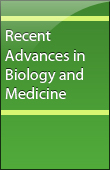
10.18639/RABM.2018.04.735010
Agriculture and Allied Sciences
Nov 20, 2018
This article displays the status of phytoremediation innovations with specific accentuation on phytoextraction of soil, overwhelming metal sullying. The different procedures to improve phytoextraction and the use of the results have been expounded. Since part of biomass is delivered during this process, it needs appropriate transfer and administration. It likewise gives an understanding into the work done by creators, which centers around high biomass extractor plants. High biomass weeds were chosen to limit the entry of contaminants into the evolved way of life by choosing non-consumable, ailment safe and tolerant plants, which can be a sustainable power source, hence making phytoextraction more suitable for present usage.
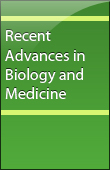
10.18639/RABM.2018.04.729264
Original Research Article
Oct 15, 2018
The aim of this paper was to study the indications and patterns of limb amputations in the University of Calabar Teaching Hospital, a retrospective study of 142 limb amputations performed in patients admitted to the University of Calabar Teaching Hospital, South-South, Nigeria. Data was obtained from theater records and the medical record department of the hospital after due ethical approval. The data spanned a period of 10 years (from January 2004 to December 2014). A total of 142 patients were seen. The age ranged from 8 to 87 years with a mean age of 46 years SD 17.9 years and a male to female ratio of 2.3:1. Adults accounted for 95.8% while 4.2% were children. Emergency procedures accounted for 47.9% of the amputations. Diabetic foot gangrene was the major cause of lower limb amputation 91 (64.1%), trauma accounted for 27 (19%) of these, 15.5% were due to road traffic accidents, and 3.5% were cases of gunshot injuries. Tumors and limb ischemia accounted for 9.2 and 2.8%, respectively. Electrical injury, industrial accidents, and ischemic limbs from tight tourniquet splints by traditional bonesetters were the common causes of upper limb amputations. Most of the amputations were on the lower limb (83.7%) with the left lower limb accounting for 47.8% and the right lower limb accounting for 35.9% .Upper limb amputations accounted for 15.4% with right and left upper limbs being 8.4 and 7.0%, respectively .Only one patient had bilateral lower limb amputation(0.7%). For the levels of amputation, the majority were below knee 54 (38%) followed by above elbow 38 (26.8%) amputations (Figure 1); others were ray amputation of the foot and hand as 28 (19.7%) and 8 (5.6%), respectively. The least was below elbow amputation 6 (4.2%). The study showed that 96% of the causes were potentially preventable, and that establishment of a prosthetic-orthotic center is needed in this part of the country.
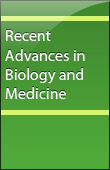
10.18639/RABM.2018.04.654377
HIV and AIDS
Sep 28, 2018
Testing for HIV is an essential component of the diagnosis and treatment of persons infected with the virus, and antenatal care provides a golden opportunity for detection of HIV infection in women of childbearing age. The use of blood sample to test for HIV has been the gold standard in clinical practice. However other body fluids such as urine, cervical secretion, tears, and saliva have potential as alternative media for HIV testing. This was a comparative noninferiority experimental study, comparing rapid diagnostic HIV testing using urine and blood samples. Two hundred and fifty new antenatal care clients and laboring women of unknown HIV status, were randomly recruited from antenatal care and delivery units. The seroprevalence of HIV was 6.31 and 5.86%, with use of urine and blood samples, respectively. The use of both urine and blood samples yielded a sensitivity of 100%. However, specificity was 99.05 and 99.52% for urine and blood samples, respectively. Area under receiver operating characteristic (ROC) curve was 0.995 and 0.998 for urine and blood samples, respectively. There was no significant difference in subjects’ perception toward the use of blood or urine for HIV testing (p > 0.05). More subjects however preferred the use of blood rather than urine for HIV testing. In keeping with previous studies, the use of urine or blood for HIV testing in this study yielded similar results, with comparable sensitivities and specificities. Urine samples may therefore well be considered as alternative to blood samples for HIV testing. The use of urine should be considered by health-care providers as suitable alternative to blood for HIV testing. Pregnant women should be educated on the benefits and accuracy of using urine for HIV testing, for improvement in the perception toward its usage and its acceptability and preference.
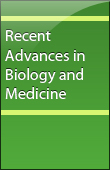
10.18639/RABM.2018.04.656131
Original Research Article
Aug 21, 2018
The aim of this study was to determine the prevalence of hyponatremia among psychiatric patients taking antipsychotics, to determine the correlation between serum sodium levels and dosage of medications as well as to determine the association between class of antipsychotic medication and serum sodium levels among patients taking antipsychotic medications. This is a longitudinal study. From 92 consenting antipsychotic naïve patients who met the inclusion criteria, sociodermographic interview schedule was administered. Thereafter, a single venous blood sample was obtained for serum electrolyte analysis and repeated after 6 weeks. Prevalence of hyponatremia was 19.4%, there was a correlation between hyponatremia and dose of antipsychotic in chlorpromazine equivalent (r 5 20.354; p 5 0.01), and there is an association between typical antipsychotic use and hyponatremia. The use of both typical and atypical antipsychotic medications can lead to hyponatremia. This is in keeping with previous reports.